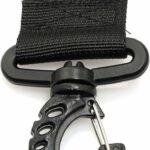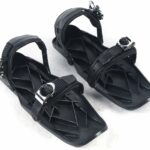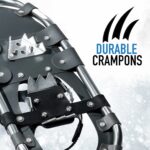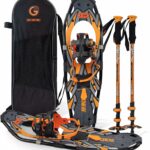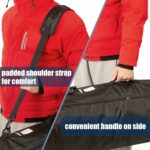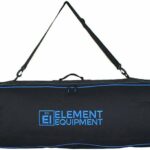You’re about to embark on a thrilling journey through the mechanics of a snowmobile, learning the ins and outs of its complex design. You’ve asked yourself, “Does a snowmobile have gears?” and this article serves to not only answers that question, but also explain the nuances of snowmobile operations. It’s not just about getting from point A to B on the snow, it’s about understanding how your ride can perform at its best in the frosty conditions. So, strap in and prepare to quench your curiosity!
Snowmobile Structure Fundamentals
For anybody with a passion for winter sports, the snowmobile is more than a method of transportation; it’s a means to explore the beautiful, snow-covered wilderness. But have you ever paused to consider what lies beneath the hood of these powerful machines? Your snowmobile, no matter how large or small, is a marvel of engineering. In this section, we’ll begin our exploration by looking at the mechanical components of a snowmobile.
Mechanical Components of a Snowmobile
Starting at the heart of the machine, the snowmobile is powered by an engine that’s quite similar to those found in motorcycles or all-terrain vehicles (ATVs). This can be a four-stroke or two-stroke engine, each offering different performance characteristics. The cooling system which could be fan-cooled or liquid-cooled, keeps the engine temperature down, preventing overheating during operation.
Understanding The Transmission System
Of course, an engine alone isn’t going to get you anywhere. That’s where the transmission system comes in. A snowmobile’s transmission system is responsible for transferring the power generated by the engine to the track, allowing you to navigate through snowy terrains. It’s a critical piece of the snowmobile puzzle and leads us to a common question that snowmobile riders often have – do snowmobiles have gears?
Do Snowmobiles Have Gears?
The short answer is that snowmobiles don’t have gears in the traditional sense as a manual or automatic car might. But that doesn’t mean they don’t have a system that plays a similar role. Let’s move further into this intriguing world of snowmobile gearing.
What is a Snowmobile Gear?
The concept of a “gear” in a snowmobile doesn’t refer to a physical cog or wheel as it would in, say, a manual transmission car. Instead, it refers more generally to the idea of a certain range of power that the snowmobile can achieve. So when someone talks about the gears on a snowmobile, they’re really talking about the snowmobile’s transmission system – typically a sophisticated piece of equipment known as a Continuously Variable Transmission (CVT).
Common Misconceptions About Snowmobile Gearing
One common misconception about snowmobile gearing is that it refers to a series of discrete steps or gears through which the snowmobile progresses. In reality, a snowmobile’s CVT allows for an essentially infinite range of power outputs between the minimum and maximum, thus providing a smooth and seamless riding experience.
Explaining The Snowmobile Transmission System
Snowmobile gearing might seem complex on the surface, but when we start to break it down, it becomes a lot more understandable. At the heart of this system is the CVT. Let’s take a closer look at how this works.
Constant Variable Transmission (CVT)
The CVT, which stands for Continuously Variable Transmission, is a type of automatic transmission that provides more useable power, better fuel economy, and a smoother driving experience than a traditional automatic transmission. CVTs are standard in snowmobiles and work by providing an unlimited range of gear ratios, allowing the engine to run at its most efficient speed regardless of how fast the snowmobile is going.
How a CVT Works in a Snowmobile
The CVT uses two pulley halves that move in and out, to create a range of gear ratios from low to high. The distance between the pulley halves changes based on the speed of the snowmobile, resulting in a change in gear ratios. This allows the snowmobile to maintain the optimal engine speed for any given situation.
Comparison Between Automatic and Manual Gears
Traditional manual or automatic gears are not suitable for snowmobiles due to their design and operating environment. Let’s look at the pros and cons of automatic and manual gears, which will help illustrate why the CVT is the best option for a snowmobile.
Advantages and Disadvantages of Automatic Gears
Automatic gears, common in most cars and trucks, are designed to handle a wide range of operating conditions and speeds. They offer smooth transitions between gears and make vehicle handling and gear shifting straightforward. However, they can also be bulky, complex, and not as efficient, particularly in low-speed or highly variable conditions.
Benefits and Limitations of Manual Gears
Manual gears, on the other hand, tend to be more efficient at converting power into motion and can provide a high level of control to the driver. However, they require manual shifting, which can be challenging in snowy and unpredictable terrain that snowmobiles often traverse. Additionally, the stop-and-start nature of manual gear transmissions does not match the continuous power needs of a snowmobile.
Role of CVT in Snowmobiles
The CVT system in a snowmobile plays a vital role. Not only does it provide power to the track, but it also makes the ride smoother and the vehicle more efficient.
Efficiency of CVT in Snowmobiles
The CVT’s ability to continuously adjust to deliver optimal power makes it far more efficient than traditional gears. It allows the snowmobile to run at the most effective RPM regardless of the speed, which can save fuel and engine wear.
How CVT Contributes to Snowmobile Performance
But it’s not just about efficiency. The CVT also contributes significantly to the overall performance of the snowmobile. By continuously adjusting to match the engine’s output to the terrain and speed, the CVT ensures that the snowmobile has ideal power at all times – whether you’re cruising on a flat expanse of snow or navigating steep, challenging slopes.
How the Drive Belt Functions
A key component in the CVT of a snowmobile is the drive belt. The transmission operation is controlled by this primary element.
Connection Between CVT and Drive Belt
The drive belt in a snowmobile connects the drive pulley at the engine to the driven pulley at the track. The movement of the belt between varying diameters of these pulleys creates the different gear ratios. As the pulleys squeeze the drive belt, the gears get smaller; conversely, when the pulleys let the drive belt extend, the gears get higher. Therefore, the drive belt and the pulley system are integral components in varying the ‘gears’ in a snowmobile’s CVT.
Drive Belt Maintenance and Troubleshooting
Taking care of your drive belt can entail frequent inspection for wear and tear and replacing it when necessary. If your snowmobile starts feeling sluggish, or if you notice a burning smell – those could be signs that your drive belt requires attention. Keeping a spare drive belt while snowmobiling is always a good idea, and knowing how to replace it on the trails can keep your expedition from being cut short.
Understanding Snowmobile Tracks and Their Impact
The impact of a snowmobile’s track on its operation and performance is substantial. Let’s delve into its role further.
Role of Tracks in a Snowmobile
While the motor provides the power and the CVT directs that power, the track is where everything comes to fruition. The track facilitates the snowmobile’s movement by providing traction against the snow. The dimensions and makeup of the track determine the speed and control that a snowmobile demonstrates.
How Tracks Influence Gearing and Speed
The size and design of snowmobile tracks can affect gearing and, in turn, the overall speed of the vehicle. Longer, wider tracks with aggressive lugs (the ‘teeth’ of the track) might offer excellent grip and flotation in deep snow but might make the snowmobile slower due to the increased resistance and weight.
Common Snowmobile Gearing Problems
Like any mechanical system, the gearing apparatus within a snowmobile may face its set of issues. Identifying these issues early can prevent extensive damage and maintain the snowmobile’s performance.
Identifying Gearing Issues
Identifying gearing-related problems in a snowmobile usually involves being vigilant about unusual signs such as: the snowmobile does not reach desired top speeds, feels bogged down, or there’s a burning rubber smell. Such issues could be due to drive belt damage or misalignment, or problems in the sheaves, as all these components play a critical role in the gear variability.
Possible Solutions to These Problems
Once you’ve identified that you’ve got a gearing problem, it’s essential to address it promptly. Depending on the issue, this might involve replacing a worn-out belt, reinstalling a misaligned belt, or oiling and cleaning the clutch and pulleys. In some cases, it might be necessary to bring your snowmobile to a professional for a more thorough inspection and repair.
Maintenance of Snowmobile Gears
The longevity and efficient performance of snowmobile gears depend significantly on consistent and thorough maintenance.
How to Properly Maintain the Gears
Proper maintenance primarily revolves around the regular checking and replacement of the drive belt, due to its critical role in the snowmobile gearing process. Keeping the clutches clean and well-lubricated can enhance belt life and clutching performance. It’s also important to periodically inspect the gears for any signs of undue wear or damage.
Signs of Wear and Tear in Gears
Drive belts can show signs of wear such as missing cogs, fraying or cracking. If you observe these signs or if your drive belt is over 5000 miles old, it’s time to go shopping for a new one. Similarly, any change in the behavior or performance of the snowmobile such as unresponsive acceleration, unusual noises, or any erratic behavior could potentially be signs of gear (CVT system) wear and tear.
Technological Advancements in Snowmobile Gearing
Over the years, snowmobile gearing has greatly improved thanks to several advancements in technology. Let’s look at some of these enhancements and what the future may hold.
Innovations in Snowmobile Gearing
Many innovations have been made to snowmobile gearing systems over the last few decades. These include advancements in CVT technology allowing for better and more efficient power transfer, improved design and materials for pulley systems and drive belts, and sophisticated electronic control systems for better optimization of gear ratios.
The Future of Gearing in Snowmobiles
The future of snowmobile gearing is likely to see further technological advancements that lead to enhanced performance and efficiency. This might include advancements in materials science leading to lighter and stronger systems, further refinements in CVT technology for more efficient power transfer, or even completely new approaches to power delivery that haven’t yet been considered.
In summation, gearing in snowmobiles doesn’t involve ‘gears’ in the traditional sense, but a well-programmed symphony of varying mechanical forces that deliver an ideal blend of power delivery and efficiency. As we forge ahead into the future, just as our pursuit for adventure won’t cease, neither will the pursuit for innovation and improvement in the snowmobile gearing mechanism. So, we shall continue to ride on, unto snowy terrains, with more perfectly geared-up snowmobiles, revving and vrooming into distant horizons.
- What Snowboard Bindings Should I Get? - January 23, 2024
- What Size Screws For Snowboard Bindings? - January 23, 2024
- How To Snowmobile On Water? - January 23, 2024

